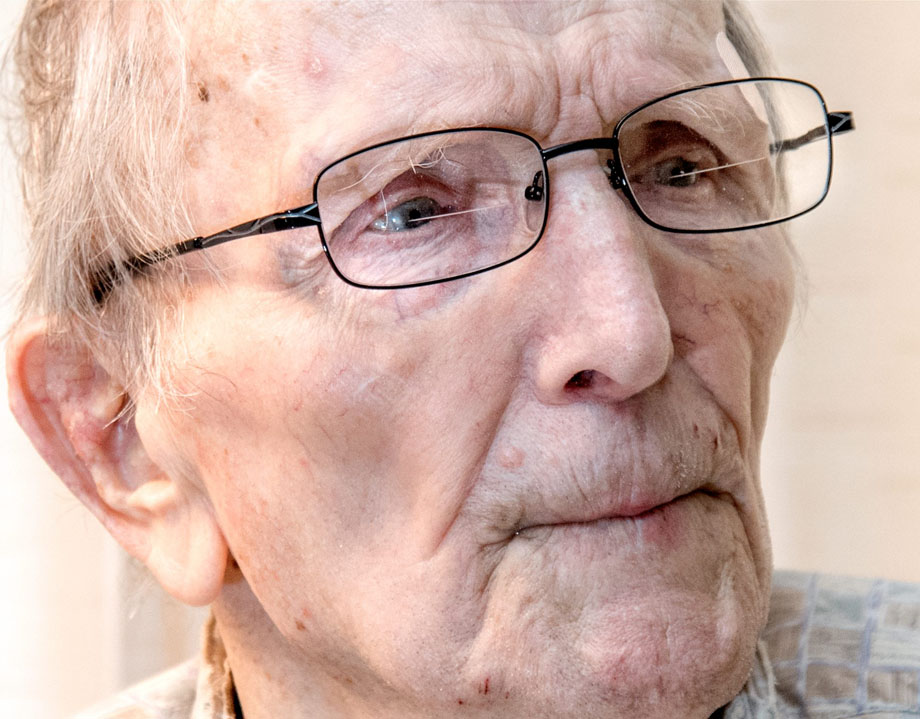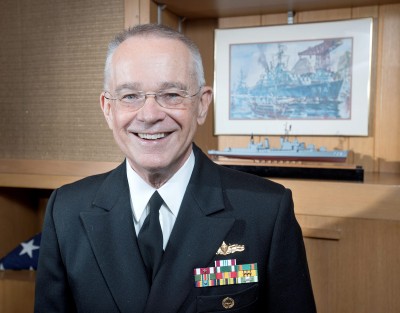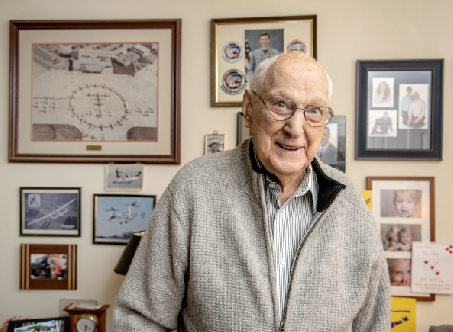Carl Casella
By Paul Wood

Photo By Robin Scholz/The News-Gazette
CHAMPAIGN — Hit by a series of kamikaze planes and bombs on one day, the USS Saratoga took heavy losses, with Carl Casella one of the few left to tell the tale.
Casella was an airplane mechanic on the carrier when it came under Japanese attack near Iwo Jima on Feb. 21, 1945.
The hard-luck ship would be sunk one year later after Operation Crossroads, the testing of atomic bombs at Bikini Atoll in the Marshall Islands.
Casella, 92, recalled the events in a somber but dry-eyed recitation.
The Chicago native was drafted Nov. 9, 1942, not long after he’d graduated from high school. He’d been working as a messenger boy for the railroads.
Casella wanted to be a flier, so his first choice was Army’s air forces. But the Navy needed pilots, too. After extensive training, he ended up a mechanic on a carrier.
The Navy also tried to make a gunner of him, too.
“I must have been not too good of a shot,” he said.
The Saratoga had been in support of an air attack on the Japanese mainland when it was redirected near Iwo Jima to protect Marines on Feb. 21.
One group of planes had already flown off the Sarataga and a second group was coming out of the hangar elevators when the attacks began, Casella said.
As the bombs hit, U.S. Grumman F6F Hellcats landed and, once the pilots were safely out, were pushed off into the ocean to make room for other planes.
From the flight deck, Casella was about to head down to the hangar level, when he was told the elevator was full and he’d have to stay topside for now.
That probably saved his life, he said.
A kamikaze plane came in on the right side of the Saratoga, crashed midship and smashed through two or three bulkheads before it exploded on the hangar level, Casella recalled.
The planes were full of fuel and ammunition. That only added to the destruction.
Some of the mechanics were still in their bunks in the hangar.
“About all of my fellow mechanics died,” he recalled. “All my friends were gone.”
History records 123 deaths on the Saratoga that day.
Another 192 were wounded and 36 planes were destroyed. There was yet another kamikaze attack a couple of hours later.
The Saratoga was a floating wreck.
The ship eventually returned to Bremerton, Wash., for repairs. “They just fit in the parts they needed,” he said.
So Casella was safe for the last few months of the war in the Pacific.
In 1973, Casella moved here as the assistant manager of the old Ramada Inn.
After two years, he went into the tour bus business, learning how to fix them and then driving them.
He retired at 82.
Long after the tragedy, he finds it easier to talk about it. Casella has amassed a collection of books and photos about the Saratoga, which he calls “Sara.”
Do you know a veteran who could share a story about military service? Contact staff writer Paul Wood at pwood@news-gazette.com.
Read more stories from local veterans:
 Joe Rank
URBANA — As gunnery officer on a Navy destroyer during the Vietnam War, Joe Rank managed several dozen gunners’ mates an …
Joe Rank
URBANA — As gunnery officer on a Navy destroyer during the Vietnam War, Joe Rank managed several dozen gunners’ mates an …
 Omer Benn
CHAMPAIGN — Omer Benn learned how to fly Navy planes during World War II, and then taught for 34 years at the University …
Omer Benn
CHAMPAIGN — Omer Benn learned how to fly Navy planes during World War II, and then taught for 34 years at the University …
 Jerry Wiese
RANTOUL — Jerry Wiese lost eight friends and comrades in his platoon on a single bloody day in Vietnam, where he served …
Jerry Wiese
RANTOUL — Jerry Wiese lost eight friends and comrades in his platoon on a single bloody day in Vietnam, where he served …